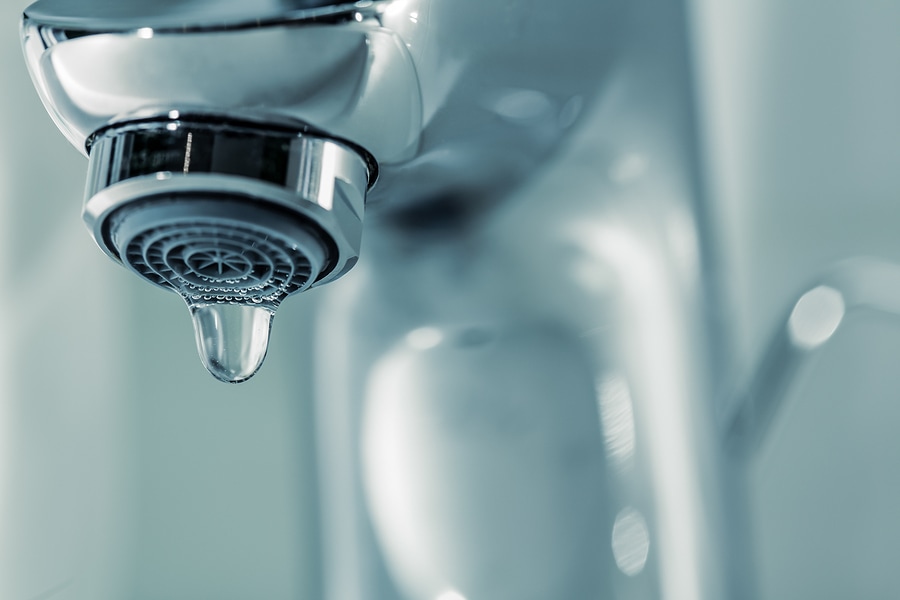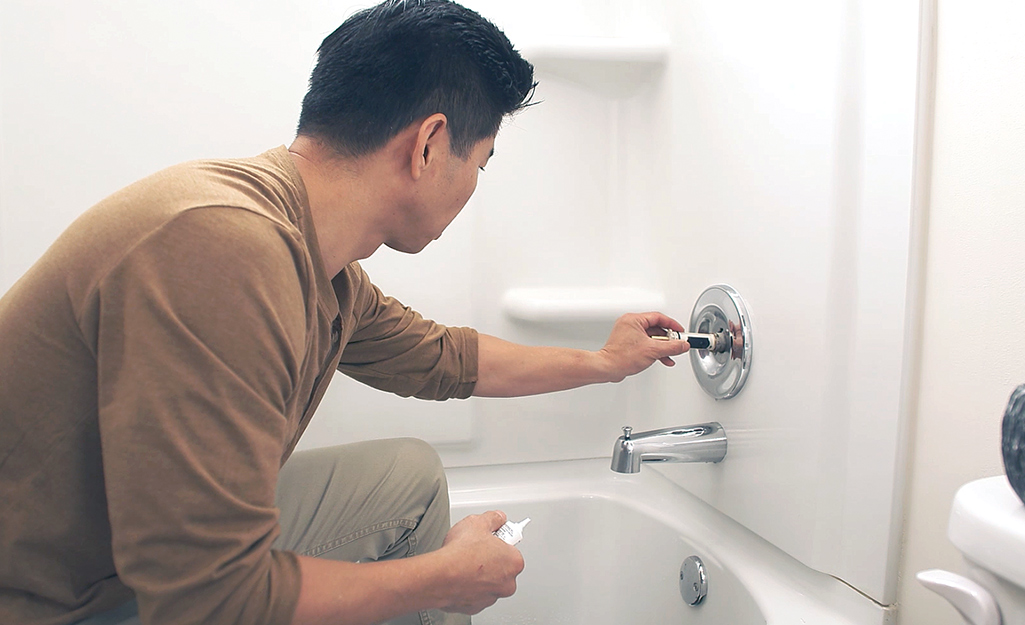Why It's Important to Repair a Broken Faucet
Why It's Important to Repair a Broken Faucet
Blog Article
Listed here down the page you might get a good deal of quality answers about What Causes Leaky Faucets & How To Fix Them.

Leaking taps might feel like a minor inconvenience, however their effect goes beyond just the aggravation of the sound. From wasting water to sustaining unneeded financial costs and health threats, overlooking a trickling faucet can lead to numerous repercussions. In this article, we'll look into why it's critical to address this common family issue without delay and efficiently.
Wastefulness of Water
Environmental Influence
Dripping taps add significantly to water waste. According to the Epa (EPA), a single tap trickling at one drip per second can lose greater than 3,000 gallons of water each year. This not only pressures water sources but likewise impacts ecosystems and wildlife depending on them.
Financial Prices
Increased Water Bills
Beyond the environmental effect, trickling taps can pump up water expenses significantly. The collected wastefulness gradually converts right into higher utility expenses, which could have been avoided with timely fixings.
Possible Property Damages
Additionally, prolonged dripping can lead to harm to components and surfaces surrounding the faucet. Water accumulation can create discoloration, rust, and also architectural concerns if left neglected, causing additional repair costs.
Health and wellness Worries
Mold And Mildew and Mold Development
The constant existence of moisture from a dripping tap creates an ideal environment for mold and mold development. These fungi not just jeopardize interior air quality however additionally position wellness threats, especially for people with respiratory conditions or allergies.
Waterborne Illness
Stagnant water in leaking faucets can come to be a breeding place for bacteria and other virus, increasing the danger of waterborne conditions. Contaminants such as Legionella germs prosper in stationary water, possibly leading to major ailments when consumed or breathed in.
Do it yourself vs. Specialist Repair
Benefits and drawbacks of DIY Repair Service
While some might try to take care of a leaking faucet themselves, do it yourself repair services include their own collection of obstacles. Without appropriate understanding and tools, DIY attempts can aggravate the concern or bring about insufficient repair work, extending the trouble.
Benefits of Hiring a Specialist Plumber
Hiring an expert plumber ensures that the underlying reason for the leaking faucet is attended to effectively. Plumbing technicians have the knowledge and devices to detect and fix tap concerns efficiently, conserving time and reducing the risk of more damages.
Step-by-Step Guide to Taking Care Of a Dripping Tap
Tools Needed
Prior to attempting to repair a leaking tap, gather the required devices, including an adjustable wrench, screwdrivers, substitute parts (such as washers or cartridges), and plumber's tape.
Typical Tap Issues and Their Solutions
Identify the sort of faucet and the certain concern triggering the drip. Typical issues consist of worn-out washers, corroded valve seats, or malfunctioning O-rings. Describe supplier instructions or online tutorials for detailed advice on repairs.
Preventive Measures
Regular Upkeep Tips
To stop trickling faucets, perform regular upkeep such as cleansing aerators, checking for leakages, and replacing damaged parts promptly. Furthermore, take into consideration setting up water-saving gadgets or updating to more reliable fixtures.
Importance of Prompt Fixes
Addressing trickling faucets as soon as they're seen stops further water wastage and potential damages, inevitably conserving both water and money over time.
Effect On Building Worth
Perception of Well-Maintained Property
Preserving a building in good condition, including attending to maintenance concerns like dripping faucets, boosts its viewed worth and desirability amongst possible buyers or occupants.
Impact on Resale Worth
Characteristics with well-maintained plumbing components, consisting of taps, command greater resale values in the property market. Attending to trickling taps can contribute to a favorable perception throughout building assessments and negotiations.
Ecological Obligation
Private Payment to Preservation
Taking obligation for dealing with trickling taps lines up with wider initiatives toward water conservation and environmental sustainability. Every individual's actions jointly make a significant effect on preserving valuable resources.
Lasting Living Practices
By prioritizing prompt repairs and taking on water-saving practices, people add to lasting living techniques that profit both existing and future generations.
Verdict
Addressing a trickling tap goes beyond simple ease; it's a crucial step towards conserving water, decreasing monetary costs, and securing wellness and residential property. Whether via do it yourself repair services or expert aid, taking action to deal with trickling taps is a tiny yet impactful method to advertise responsible stewardship of resources and add to a healthier, extra lasting future.
How to Fix a Leaky Faucet: Step-by-Step Repair Guide
A leaky faucet may seem like a simple annoyance, but if it's not fixed promptly, that leak could cost hundreds to potentially thousands. From water damage to mold, mildew, and high water bills, even a tiny leak can be catastrophic if left unattended. Damage like this can even affect the overall value of your home, so it's important to take the right approach for leaky faucet repair. You may need the help of a plumber in some cases, but we've got a few tips you can try on how to fix a leaky faucet before calling the pros.
Four Faucet Types
When you're learning how to fix a leaky faucet, the first step is knowing what kind of faucet you're working with! There are four common types.
Cartridge Faucets
Cartridge faucets come in one- or two-handled varieties. In one-handled cartridge faucets, hot and cold water combines in a single cartridge. In the two-handled versions, hot and cold water are controlled separately and mixed in the faucet.
Ball Faucets
Ball faucets have a single lever you push up and down to adjust the pressure and rotate to change the temperature. A slotted metal ball controls the amount of water allowed into the spout.
Compression Washer Faucets
They're the oldest type of faucet, but they're still used in many homes — especially older ones. Compression faucets have two separate handles that, when turned, raise or lower the washer that seals a water valve. This valve stops water from flowing through the faucet when it is turned off.
Disc Faucets
Disc faucets rarely need to be repaired due to their maintenance-free design. The water flow is controlled by two discs — the upper one raises and lowers against a fixed lower disc, creating a watertight seal. If your disc faucet starts leaking, you may need to replace the seals or clean residue buildup from the inlets.
Fixing a Leaky Faucet
Step 1: Turn Off the Water
Whether you're learning how to fix a leaky bathtub faucet or how to fix a leaky kitchen faucet, always turn off the water supply to your working area when you're fixing a leak. The last thing you want is a flood added to your list of things to fix.
Look for the shutoff valves below your sink or around the tub and turn them clockwise to stop the water flow. If your faucet doesn't have shutoff valves, you may need to turn off the water for the whole house. Check to make sure it's off by turning the faucet on. If nothing comes out, you're ready to start the repair.
Step 2: Take Apart the Faucet
How you disassemble your faucet depends on the type of fixture you have. You can use a flathead screwdriver to remove the caps on top of the handle or handles for cartridge and compression faucets. Inside, you should see handle screws. Unscrew these with a screwdriver to remove the handle.
Disc- and ball-style faucets will typically have an inlet screw near the handle, and removing that will reveal the interior of the faucet.
Detach the Valve Stem
For cartridge- and compression-style faucets, you'll see the inner valve stem or cartridge once you remove the faucet handles. If you have a compression faucet, unscrew the brass valve stem. If you have a cartridge faucet, pull out the cartridge. If your cartridge has been in place for a while, it may require some tools or extra force to remove it due to mineral deposits.
Examine and Replace Parts
Once you've removed the parts, check them out to confirm what needs to be replaced. You may see corroded rubber washers, O-rings, stems, or cartridges. On a ball-style faucet, check the seats and springs for damage.
If you need to repair a leaky disc faucet, check the inlet and seals on the lower disc.
Once you determine what parts must be replaced, visit your local hardware store. Bring the damaged parts with you to ensure you can purchase the correct components to replace them.
Clean Valves and Faucet Cavity
If you've removed a stem or cartridge, you may notice mineral buildup in the faucet's threads. Use white vinegar to clean the valve seat by soaking it for a few minutes, then scrub it away with a soft toothbrush and rinse with warm water. You can also clean the interior of the faucet in the same way.
Reassemble the Faucet
Once your faucet is cleaned and the required parts have been replaced, it's time to reassemble it. Put the pieces back together and slowly turn the water supply back on. Doing this slowly is crucial because too much initial water pressure can damage the new hardware you've just installed.
https://homewarranty.firstam.com/blog/how-to-fix-leaky-faucet

As an enthusiastic person who reads about , I thought sharing that piece of content was essential. Sharing is good. Helping others is fun. Thanks for your time. Return soon.
Report this page